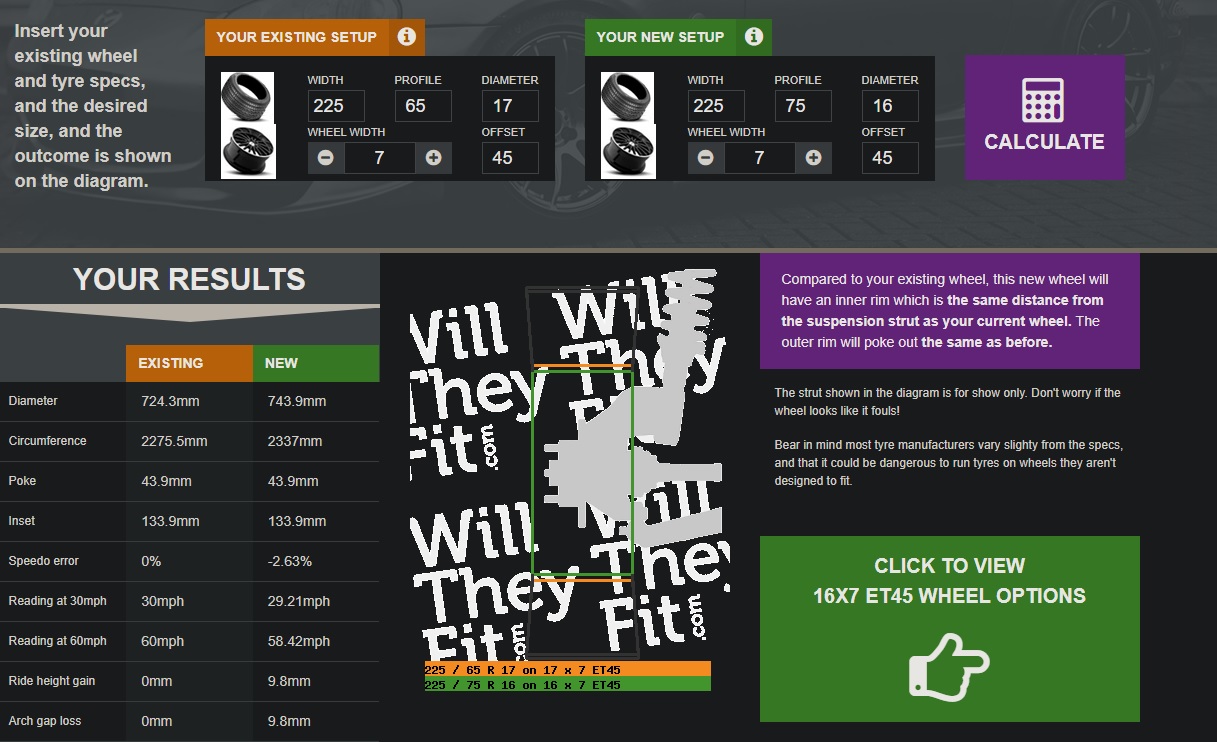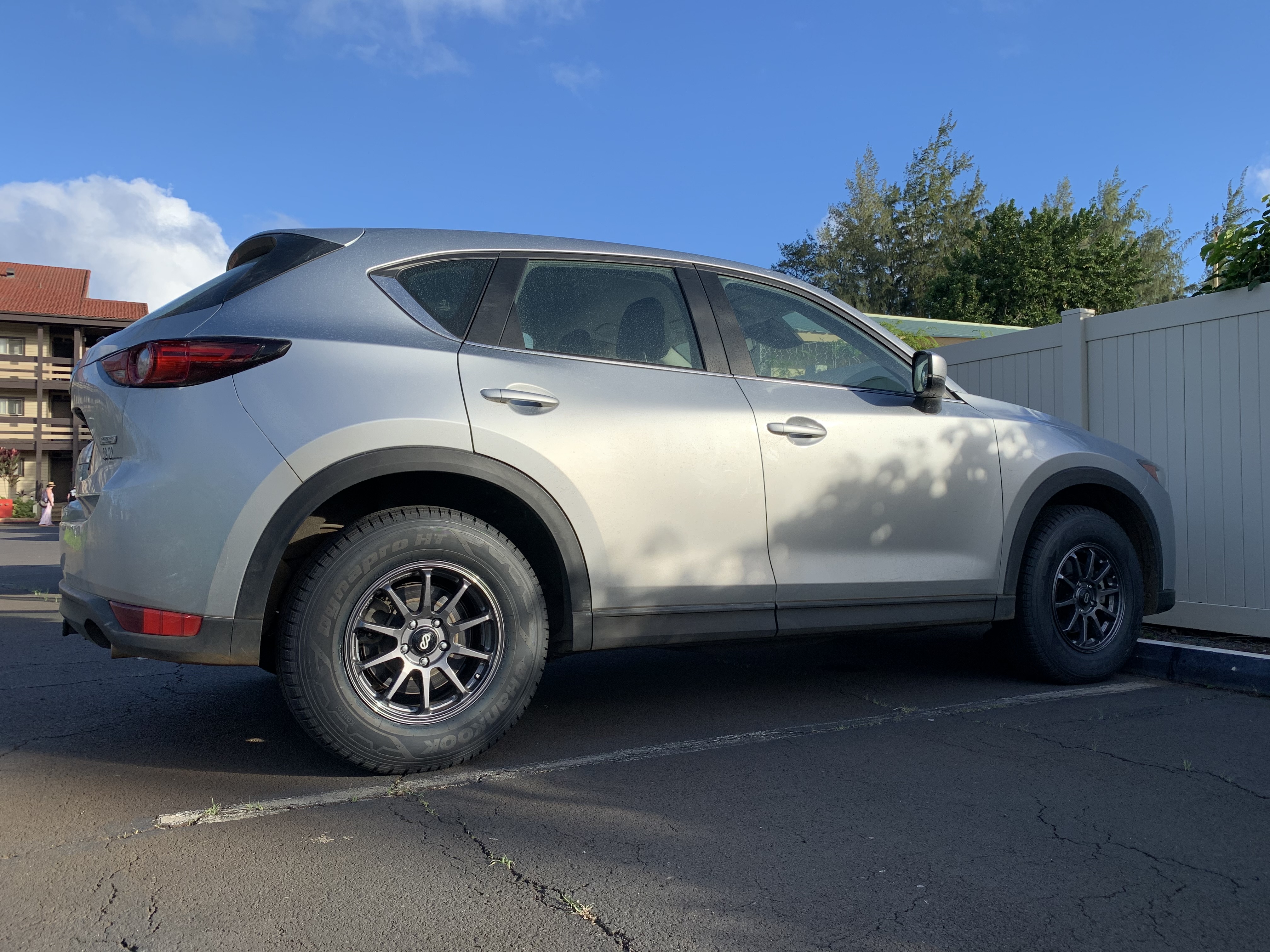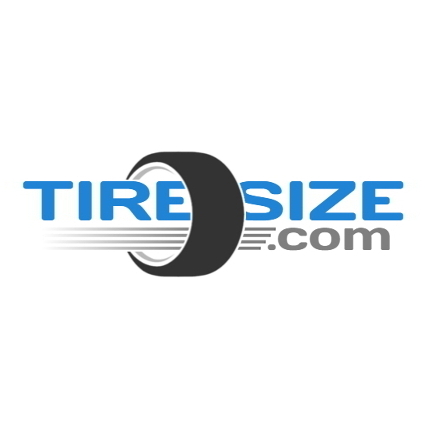- :
- 2019 CX-5 AWD
Since I got my 2019 CX-5, I've wanted bigger tires. I finally bought a set of wheels and tires. The goal is to improve the ride and reduce road noise. Obviously, 18s, 19s, or 20s look better but I like big tires and the standard 225/65/17s do not satisfy. The standard Yokohama Geolandar G91A 225/65/17 tires have a load index of 100 (1,764lb per tire) and 10/32nds of tread depth. https://www.tirerack.com/tires/tire...ireModel=Geolandar+G91A&partnum=265HR7GEOHTV3
For wheels, I bought a set of Enkei PX-10s from TireRack - which were reasonably priced at $150 each and one of the lightest wheels available in this size, 16.4lbs. I stayed with the factory +45 offset. I decided to purchase the tires on Amazon because I wanted to be able to return them if they didn't work out, which was good because the first set didn't. Costco, Amazon, and Discount Tire (if you have one near you) will accept tire returns.
I first tried 235/70/16 Michelin Defender LTX, but it didn't improve the ride (about the same) and it's actually louder than the 17s! This is an "XL" tire (Extra Load) with a load index of 109 (2,271lbs per tire), compared to 100 (1,764lb per tire) for the originals. Tread depth is 12/32nds. I wanted to try a heavier, stronger tire at lower pressure, but this tire proved to be too stiff - even at 27PSI it transmits too much noise into the cabin.
The other thing that surprised me is how much heavier the steering became. I like the light electric power steering of the CX-5 as it comes from the factory and it isn't user adjustable, so this was another issue with the Michelins. I don't know how much of this is due to the heavier construction of the tire and how much is due to the extra 10mm of width. Also, the size wasn't enough of an increase over the standard tire. So I returned them.
BTW, car has salt spots because of the salt air near the ocean. It gets washed regularly.



The size I should have got to begin with is 225/75/16, or 29.3". A search of this size on Amazon led me to the Hankook Dynapro HT RH12, the first Korean tire brand I've tried. The tires are made in a U.S. plant. Tread depth is 13/32nds. The Hankooks are much better priced vs the Michelins ($111 vs $198 at time of purchase) and had great reviews on Amazon and TireRack, so I went with them. On TireRack, you can sort reviews to only show people who've reported higher amounts of mileage with a set of tires to get an idea of how they might hold up over longer mileage. Both tires have pretty good reviews, but as I mentioned the Michelins were just too heavy of a tire for this vehicle.
These tires are great so far, quiet and smooth which was my goal with this setup. No rubbing at full lock. This is the largest tire you can get in 16" without going wider. It's good for an additional 22.5mm of sidewall (225 x .65 = 146.25mm, 225 x .75 = 168.75mm) over stock, or .9".


Thanks for reading!
For wheels, I bought a set of Enkei PX-10s from TireRack - which were reasonably priced at $150 each and one of the lightest wheels available in this size, 16.4lbs. I stayed with the factory +45 offset. I decided to purchase the tires on Amazon because I wanted to be able to return them if they didn't work out, which was good because the first set didn't. Costco, Amazon, and Discount Tire (if you have one near you) will accept tire returns.
I first tried 235/70/16 Michelin Defender LTX, but it didn't improve the ride (about the same) and it's actually louder than the 17s! This is an "XL" tire (Extra Load) with a load index of 109 (2,271lbs per tire), compared to 100 (1,764lb per tire) for the originals. Tread depth is 12/32nds. I wanted to try a heavier, stronger tire at lower pressure, but this tire proved to be too stiff - even at 27PSI it transmits too much noise into the cabin.
The other thing that surprised me is how much heavier the steering became. I like the light electric power steering of the CX-5 as it comes from the factory and it isn't user adjustable, so this was another issue with the Michelins. I don't know how much of this is due to the heavier construction of the tire and how much is due to the extra 10mm of width. Also, the size wasn't enough of an increase over the standard tire. So I returned them.
BTW, car has salt spots because of the salt air near the ocean. It gets washed regularly.

The size I should have got to begin with is 225/75/16, or 29.3". A search of this size on Amazon led me to the Hankook Dynapro HT RH12, the first Korean tire brand I've tried. The tires are made in a U.S. plant. Tread depth is 13/32nds. The Hankooks are much better priced vs the Michelins ($111 vs $198 at time of purchase) and had great reviews on Amazon and TireRack, so I went with them. On TireRack, you can sort reviews to only show people who've reported higher amounts of mileage with a set of tires to get an idea of how they might hold up over longer mileage. Both tires have pretty good reviews, but as I mentioned the Michelins were just too heavy of a tire for this vehicle.
These tires are great so far, quiet and smooth which was my goal with this setup. No rubbing at full lock. This is the largest tire you can get in 16" without going wider. It's good for an additional 22.5mm of sidewall (225 x .65 = 146.25mm, 225 x .75 = 168.75mm) over stock, or .9".

Thanks for reading!
Last edited:

